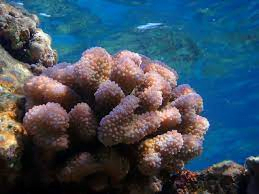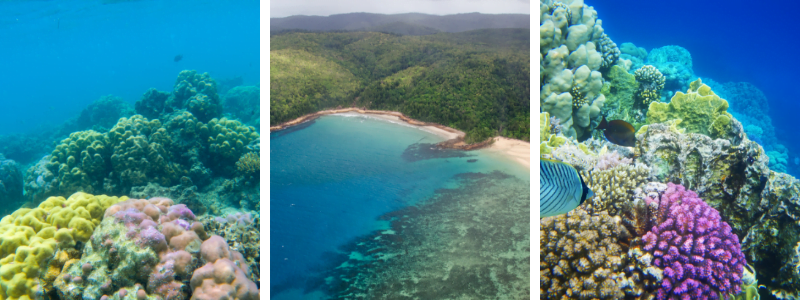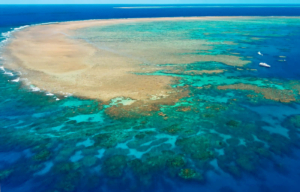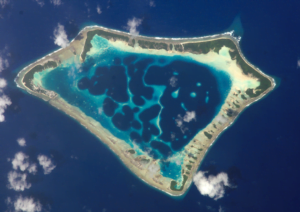Environment, Uncategorized
CORAL REEFS:

WHAT IS A CORAL REEF?
- Coral is actually a living animal. Coral has a symbiotic relationship (each gives something to the other and gets something back in return) with ‘zooxanthellae‘ microscopic algae which live on coral
- . Referred to as ‘The rainforests of the sea’, coral reefs harbor a rich biodiversity. In warm shallow seas reefs are built by coral polyps which produces casing of limestone.
- Zooxanthellae algae covers the reef and provides it a vibrant colour.
There are two main types of corals
1) Stony Corals and
2) Soft Corals.
Stony (Hard) Corals:
- Some stony corals obtain their food from one-celled organisms called zooxanthellae.
- Zooxanthellae are single-celled organisms that use sunlight for photosynthesis and transfer 95% of the food they produce to coral polyps.
- Both coral and the zooxanthellae benefit from this association. These corals are called hermatypic corals.
- Individuals polyps of hermatypic corals secrete calcium carbonate (limestone) skeletons which, in time form coral reefs. Therefore, hermatypic corals are also known as reef building corals.

Features of the Corals
- They occur in shallow tropical areas where the sea water is clean, clear arid warm
- The coral reef cover in Indian waters is roughly estimated upto 19,000 sq.Km.
- Coral reefs are one of the most productive and complex coastal ecosystems with high biological diversity.
- The high productivity is owing to the combination of its own primary production and support from its surrounding habitat.
- Reef building coral are symbolic association of polyps (coral animals) and ‘zooxanthellae’ (the microscopic algae).
- The corals are generally slow growing colonies of animals while zooxanthellae are fast growing plants.
Ideal conditions for the formation of Reefs
- High Temperature:
- Availability of Sunlight:
- Salinity:
Types of reefs
There three main types of reefs are
1) Fringing Reefs
2) Barrier Reefs
3) Atolls Fringing Reefs
Fringing reefs are coral reefs that grow in shallow waters.
- They closely border the coastline or are separated from it by a narrow stretch of water.
- Many of the reefs round Sri Lanka and Thailand are fringing reefs.

Barrier reefs
- Barrier reefs grow parallel to the coast but are separated from land by a lagoon.
- They are found sometimes many kilometers from shore (10–100km). Barrier reefs can grow in fairly deep water, because, often, the living coral builds upon remains of corals that grew in the same area when sea level was lower, during the last ice age.
- The Great Barrier Reef of Australia extends about 2,010km parallel to the east coast.

ATOLLS
- Atolls grow surrounding (or partly surrounding) an island which then sinks relative to sea level (usually because volcanic activity forming the island stops) or was flooded as sea level rose after the last ice age.
- Atolls surround (or partly surround) a central lagoon.
- It is a ring-shaped island reef that encircles (sometimes completely surrounding) a central lagoon in which detrital material collects.
- In some oceanic Atolls calcareous Algae forms the bulk of the reef.
Note: The Lakshadweep and Maldives islands in the Indian Ocean are composed of Atolls.

Threat to coral reefs:
- Overexploitation (Over-fishing) for food,
- for aquarium trade,
- for the trinket trade,
- for medicinal purposes and Destructive fishing practices.
- Coral mining (Overexploitation/ Habitat Destruction)
- Sediment, nutrient and chemical pollution: One of the greatest threats to coral reefs is human development that alters either the marine or land-based physical environment. Certain development activities lead to increases in freshwater runoff, resulting in large amounts of sediment being washed into the sea.
- Marine based pollution
- Global warming and climate change
PRELIMS MCQs FOR PRACTICE
- Global Coral Reef R&D Accelerator Platform has been launched by:
- a) United Nations Convention on the Law of the Sea (UNCLOS)
- b) International Coral Reef Initiative (ICRI)
- c) G20
- d) UN Environment World Conservation Monitoring Centre
CORRECT ANSWER: (c)
EXPLANATION: The Global Coral Reef R&D Accelerator Platform is an innovative action-oriented initiative aimed at creating a global research and development (R&D) program to advance research, innovation and capacity building in all facets of coral reef conservation, restoration, and adaptation, and strengthen ongoing efforts and commitments made to enhance coral reefs conservation and their further degradation. It was launched at The Environment Ministerial Meeting (EMM) of the G20.
2) Consider the following statements about Coral Reefs:
- They provide accurate records of Climate Change.
- The highest density of Coral reefs in India is on its eastern coast.
- Global Coral Reef Alliance (GCRA) is a non-for profit organization initiated by UNEP to conserve Coral Reefs.
Which of the statements given above is/are correct?
- a) 1 only
- b) 1 and 2 only
- c) 1 and 3 only
- d) All of the above
CORRECT ANSWER: (a)
EXPLANATION: Benefits of Coral Reefs It support the habitats of flora and fauna in the sea.
- They are the counterpart to the tropical rain forest in terms of species diversity and biological productivity in the Ocean. Coral reef enables the formation of associated eco-systems which allow the formation of essential habitats, fisheries and livelihoods. In addition, coral reefs are climatologically important because they provide an accurate long-term record of the climate change and help in extending our knowledge of seasonal climate variability in many remote tropical oceans.
MAINS QUESTIONS:











